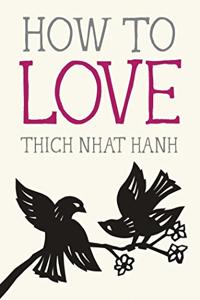
Want to learn the ideas in How to Love better than ever? Read the world’s #1 book summary of How to Love by Thich Nhat Hanh here.
Read a brief 1-Page Summary or watch video summaries curated by our expert team. Note: this book guide is not affiliated with or endorsed by the publisher or author, and we always encourage you to purchase and read the full book.
Video Summaries of How to Love
We’ve scoured the Internet for the very best videos on How to Love, from high-quality videos summaries to interviews or commentary by Thich Nhat Hanh.
1-Page Summary of How to Love
Overview
Lately, magazines and lifestyle sites have been talking about the mindfulness craze. It can make you happier, more productive, and help you realize long-cherished ambitions. You just need to savor every bite of food, step in life that you take or flower that you see.
When the author noticed how mindfulness was making inroads in Western societies, he had an idea. He wondered what would happen if you applied the techniques of mindfulness to relationships?
He believes that the key to a happy relationship is loving yourself. He says that respecting yourself is the foundation of love, and he gives examples of how you can practice sex with your partner in order to achieve intimacy.
Big Idea #1: Love must be nourished with happiness and shared with others.
If you add a spoonful of salt to a glass of water, it will be undrinkable. However, if you added the same amount to an entire river, it wouldn’t make any difference at all.
Love is similar. If we are small-hearted, the tiniest faults of others can anger us. But if we expand our hearts, we become capable of being compassionate and empathetic with them.
So, how do you become more loving? First, love needs sustenance. It needs happiness. Happiness is the food of love because when you’re happy, you can be more loving to yourself and others. But what exactly is happiness? Zen Buddhism provides some insight into this question by saying that…
Happiness is not about getting everything you want. It’s a state of mind that comes from being mindful and present in the moment. For example, when you’re walking, focus on every movement of your body. Don’t think about where you’re going or why; just experience each step as it happens. By doing this, you’ll begin to understand what happiness is because mindfulness helps us appreciate beauty in the world around us like a flower blossoming before our eyes.
This is a great tip, but don’t keep it to yourself! Sharing your love and happiness will make them even greater.
Mindfulness is a great tool for sharing happiness with other people. Imagine going on a walk with someone who’s worried about something. You can bring them joy by pointing out things that you enjoy, like the sun or clouds in the sky.
Big Idea #2: To understand the true nature of love, you must recognize its four traits.
When we think of love, what do you think of? Most people associate it with finding a partner who is attractive and successful. However, that’s not true love. True love is about understanding the suffering of others and helping them in any way possible. It also requires empathy to be able to see things from someone else’s perspective.
True love is easily recognizable. It makes you feel happy and peaceful, like everything in life is right. If you’re not feeling that way about someone, it probably isn’t true love. True love also comes with reverence for your partner. In many Asian cultures, spouses are treated as honored guests by each other, which helps maintain a healthy relationship between them and fosters respect. The final attribute of true love is its expansiveness; it grows to include all living things over time.
True love is defined by four traits. These are loving-kindness, compassion, joy and equanimity.
Loving-kindness is the ability to make others happy. It’s about being mindful of what makes people happy and making them feel that way.
Compassion allows us to identify with the suffering of others and feel their pain. Once we’re aware of that, we can be empathetic toward them because we see things from their perspective.
Joy is a lasting, deep happiness that can be shared with others.





